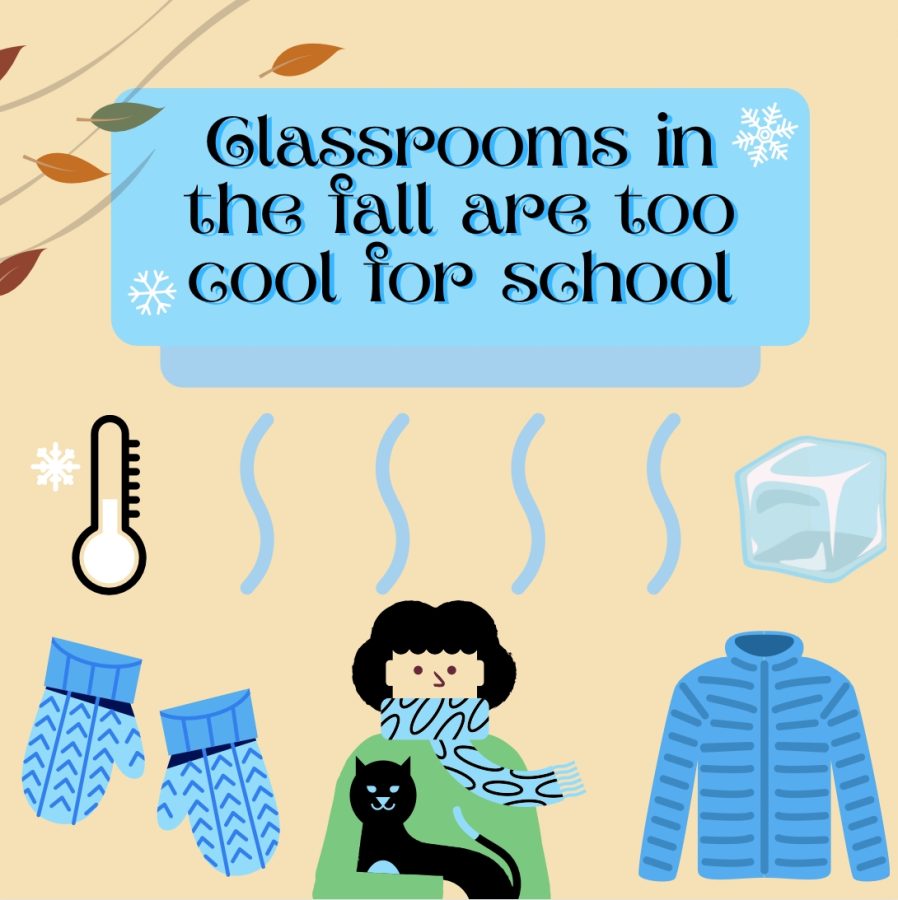Classrooms in the fall are too cool for school
When thinking about fall at CHS, a couple words can come to mind: Freezing-cold classrooms. Students should never walk into a fully air-conditioned classroom when the temperature outside is already cool.
That is not to say that classrooms need to be heated up. Everyone appreciates walking into an air-conditioned classroom after a hot and sweaty day. However, it feels absolutely terrible when it is chilly outside (well, to Californians, anyway) and the classroom is even chiller. Teachers must not air condition their classrooms to be frigid.
Having too chilly of a classroom can lead to learning detriments. A study by researchers from Cornell University found that workers in a room with a temperature of 68º F were less than half as productive and had 44% more errors than people who were working in a warmer room with a temperature of 77º F. This makes sense. If students are cold, then they will use up energy trying to warm themselves up, resulting in less mental energy for concentration on their work. In the classroom, this can lead to making mistakes on homework, quizzes, and tests, as well as people zoning out in class.
Now, some people may say that it is better to have a chilly classroom instead of a hot one, because the freezing people can wear layers. However, those with worse circulation than others can often have their extremities — hands and feet, especially fingers and toes — become way more frigid than the rest of their body. Most of the time, a person cannot put their hands in their pockets because of the necessity to type and write, meaning that their hands freeze. Having colder hands can make one feel like they are moving slower or that they cannot write as quickly, which limits their ability to work efficiently in class.
This is terrible for students, especially during block schedule days. Students with teachers who turn up the air conditioning have to suffer for nearly two hours in an icebox. Teachers have ultimate control over the air temperature, and while one can respect that it is their own classroom, they also have a responsibility to their students. Students are freezing for around an hour four times a week and something must be done.
There is no perfect solution for everyone, but teachers can do their best to talk to their students about the classroom temperature. Teachers simply asking students about if they are okay with the classroom’s temperature can greatly encourage chilly students to speak out.
Having cool classrooms during hot summer or fall days is great, but when the day is cool and the classrooms have air conditioning blasting, it does not help students with their learning or physical comfort.
Hello there! Our goal is to provide relavent, engaging journalism for readers of all ages. Your donation will support the student journalists of the Wolfpacket at Claremont High School, and will allow us to purchase equipment, print our monthly issues, and enter in journalism competitions. We appreciate your consideration!

Mayo Ou is the Head Editor-in-Chief of the Wolfpacket and a senior at CHS in her fourth year on the staff. Her goal this year, other than not procrastinating...










